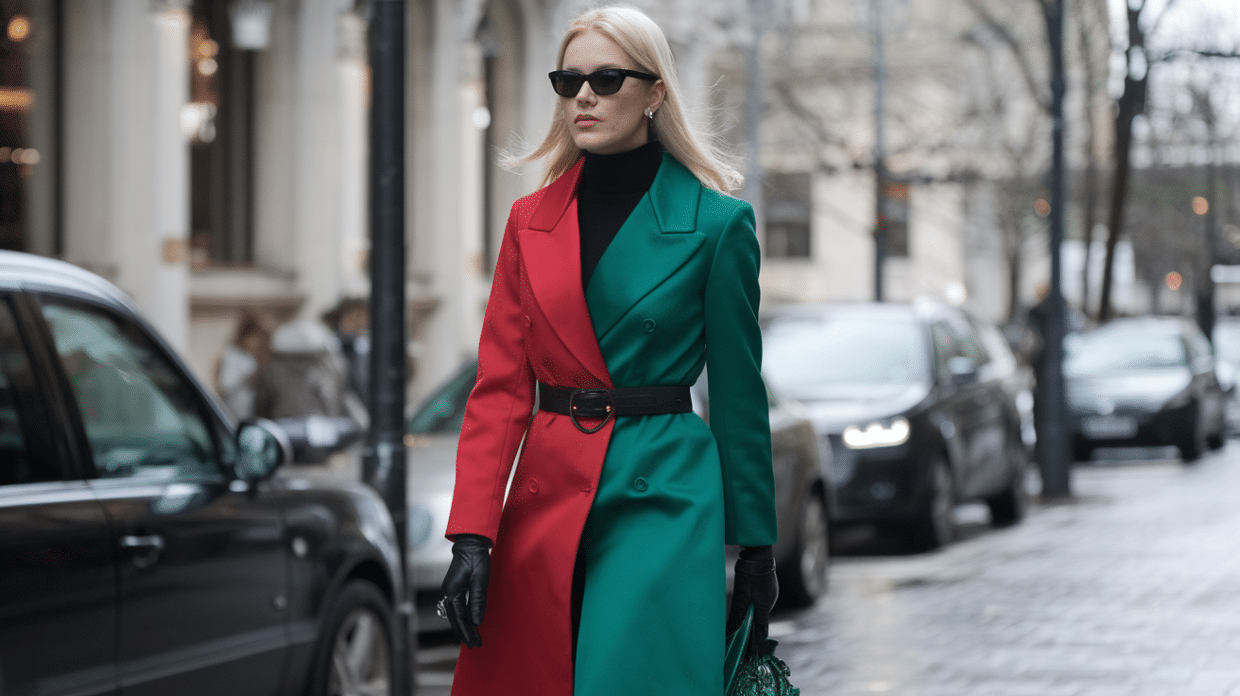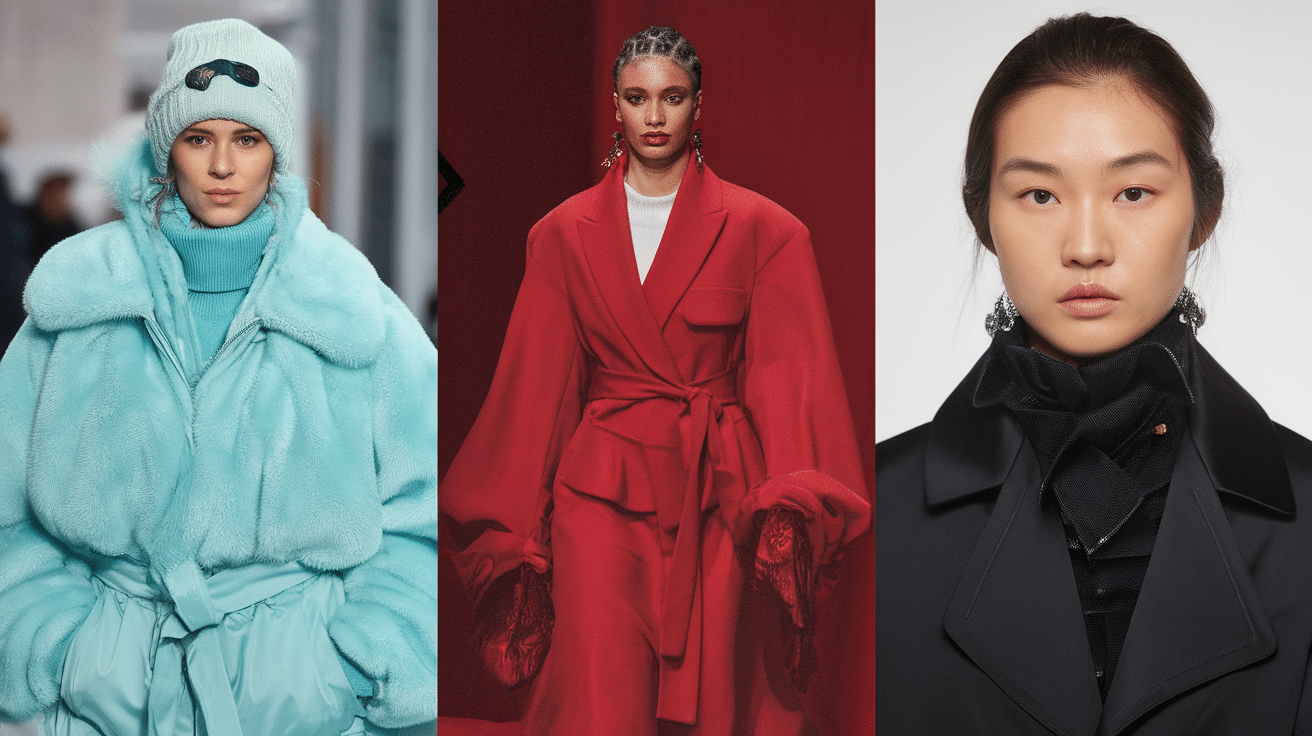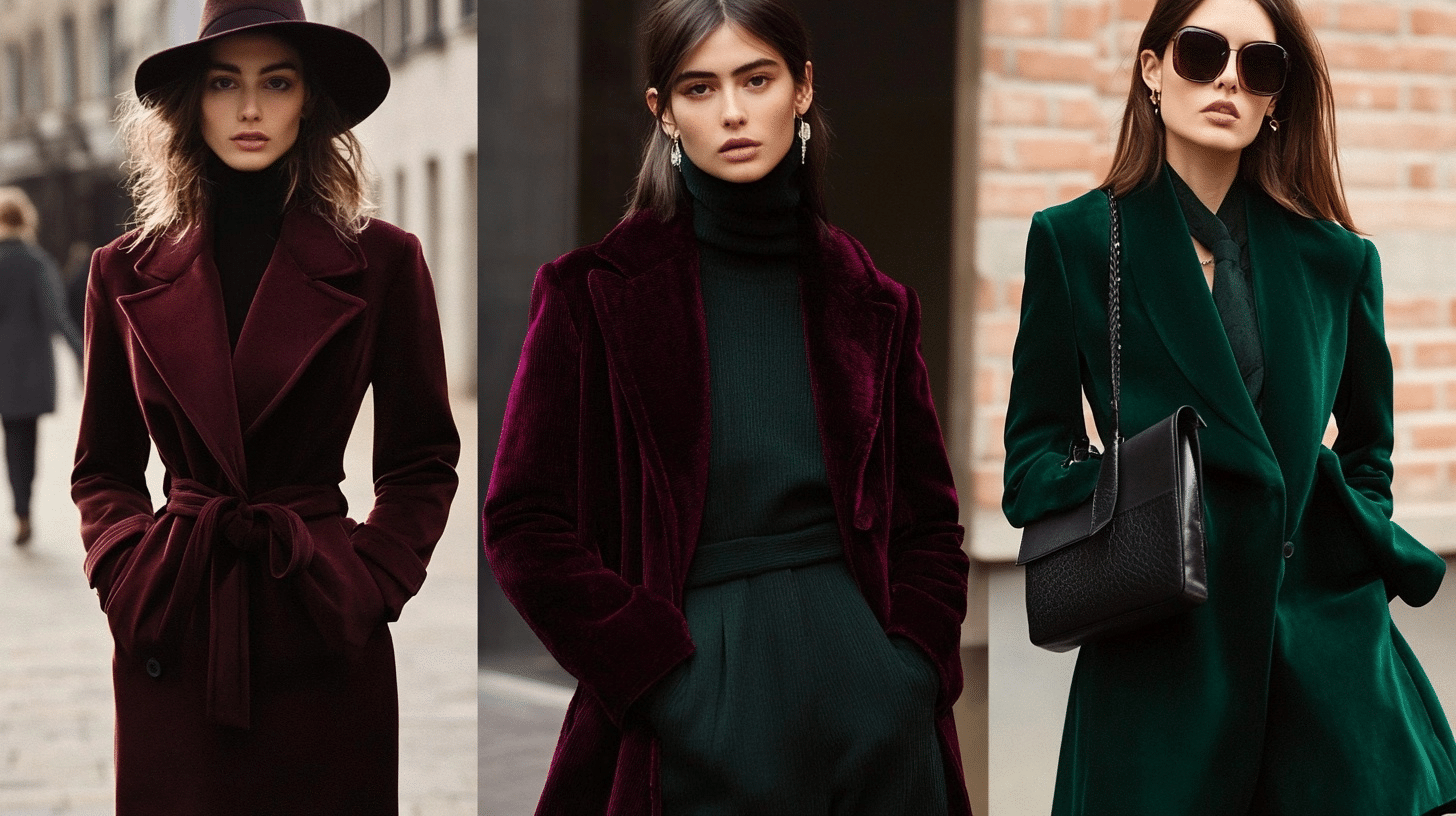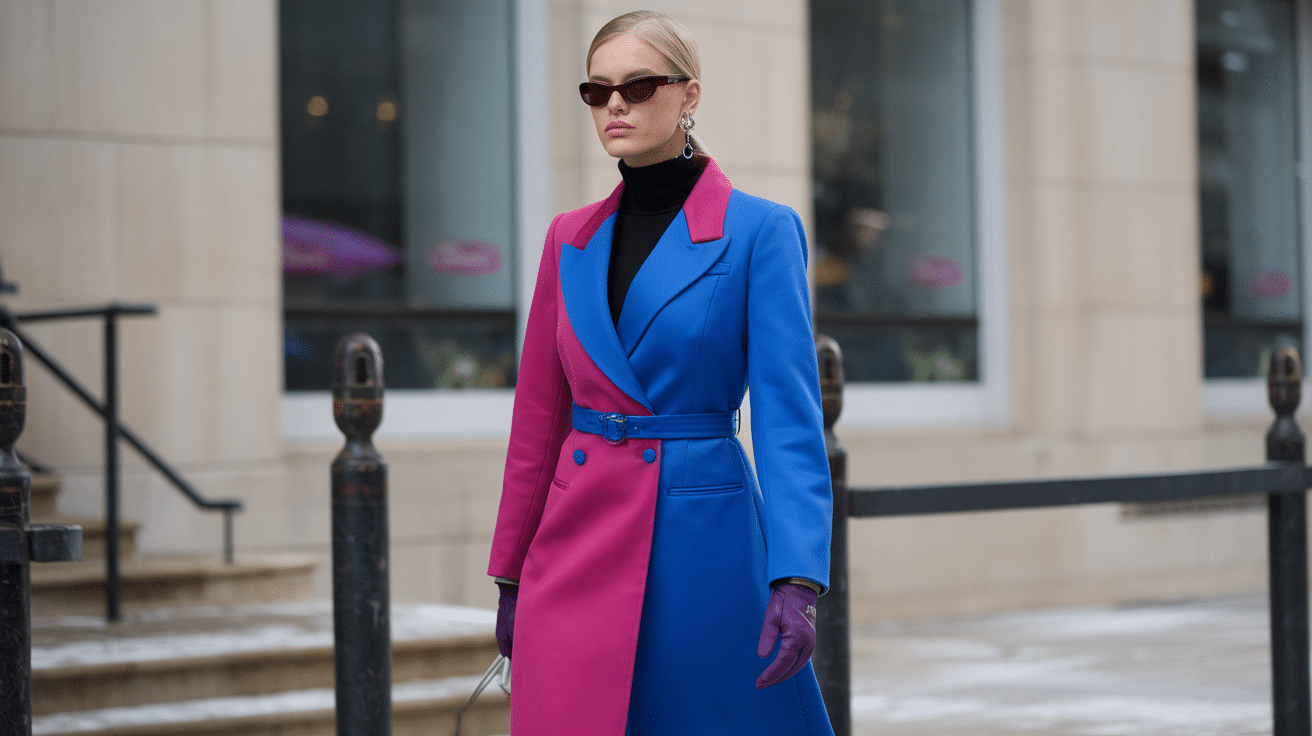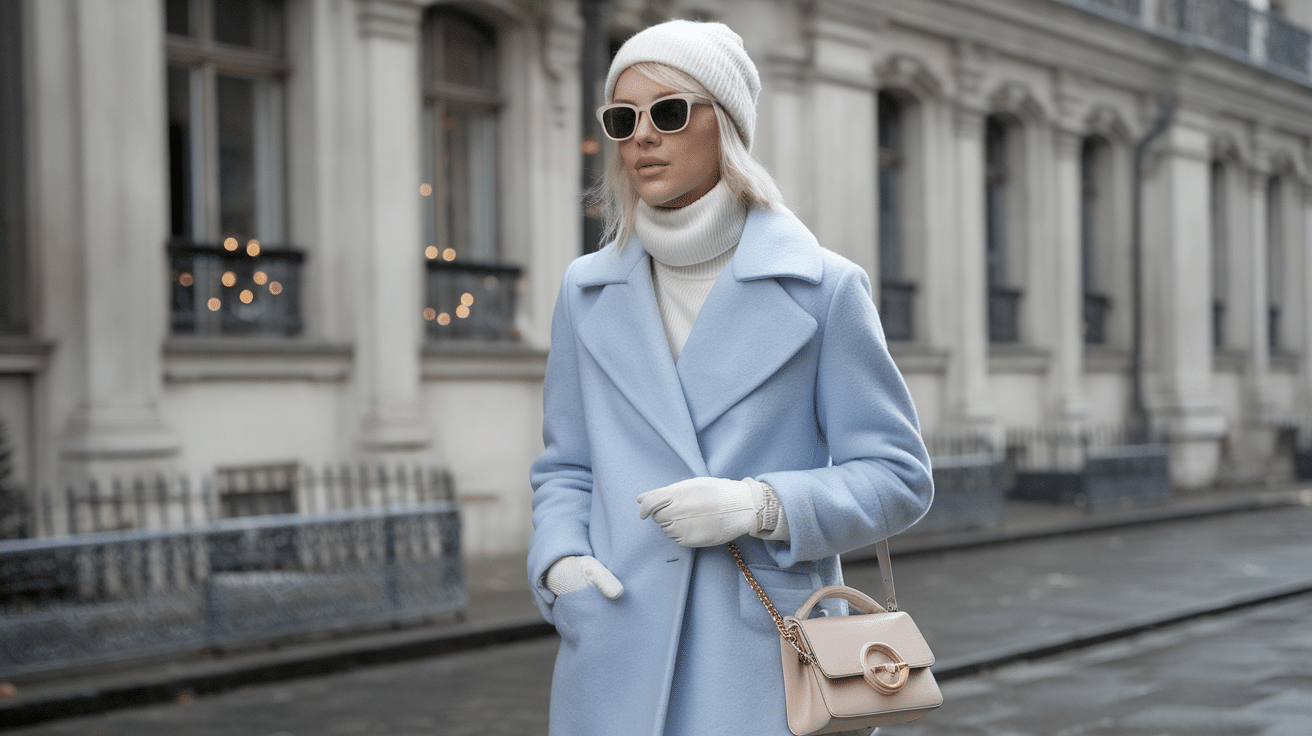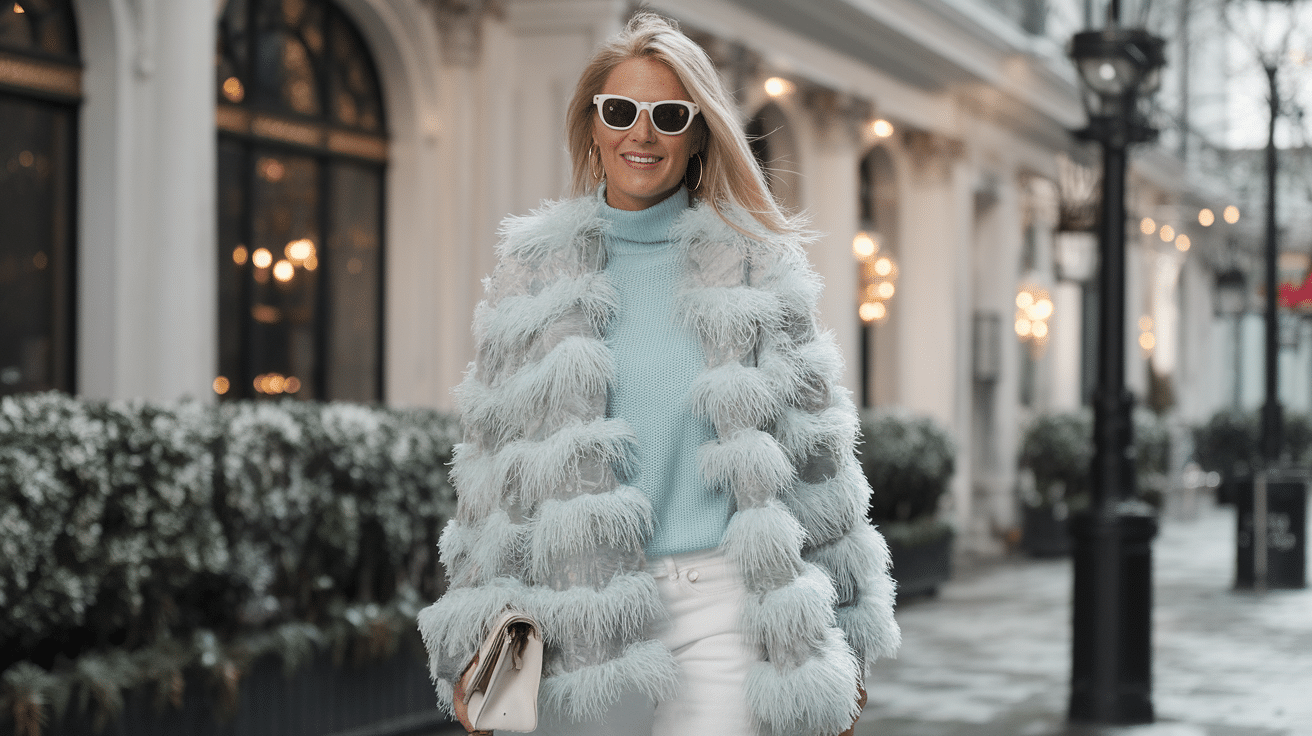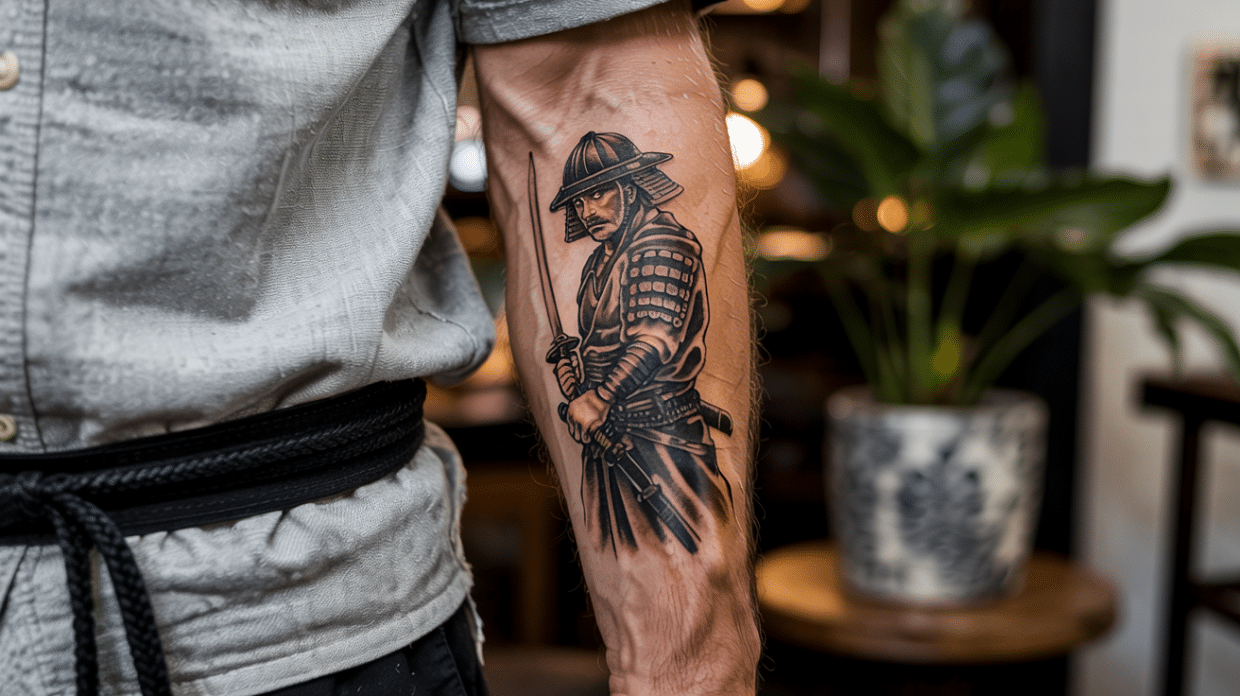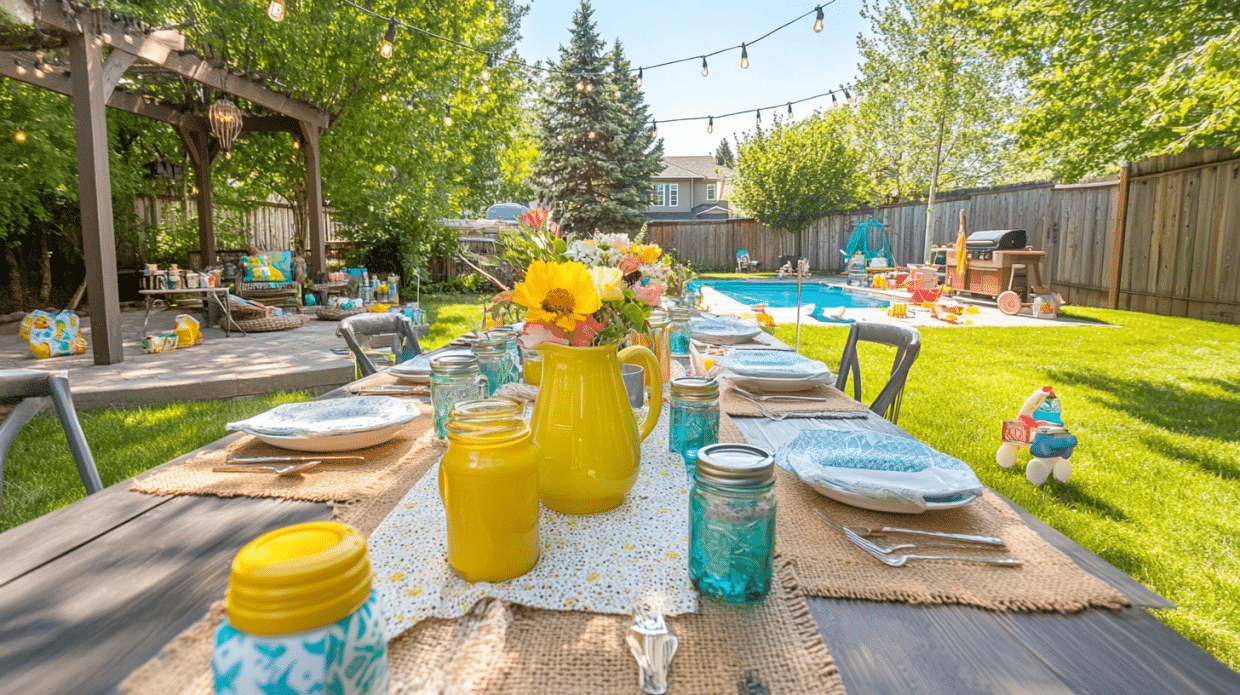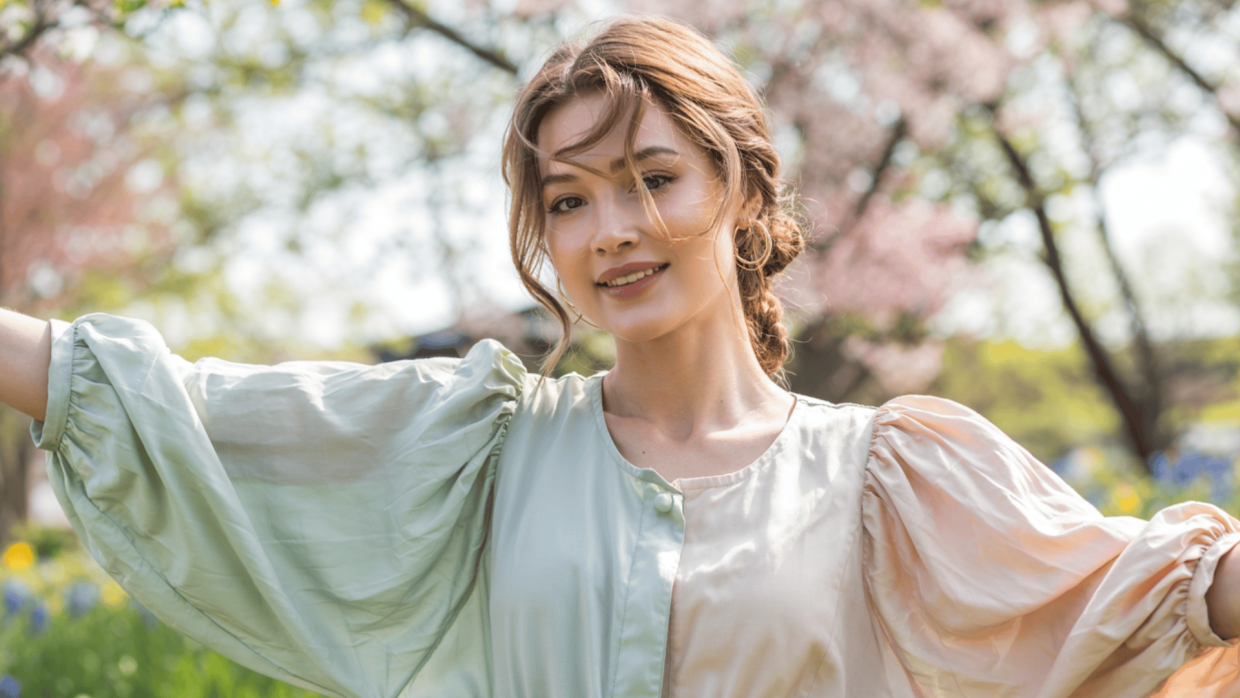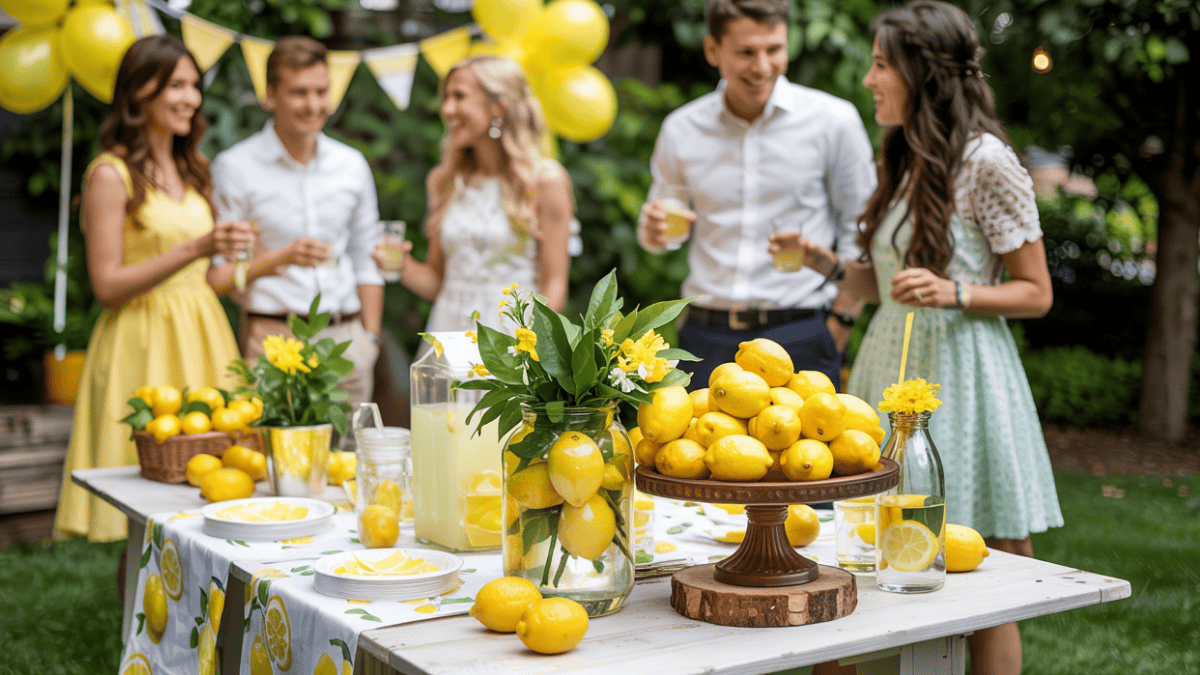Have you ever wondered why some colors make you look fresh and distinct, while others leave you looking tired or washed out? The answer might lie in your color season, specifically, the winter color palette.
A winter color palette features cool, clear, and high-contrast colors that work together to improve your natural features.
Understanding if you belong to this color family can upgrade your approach to shopping, help you build a more cohesive wardrobe, and ensure you always look your best.
In this guide, we’ll cover the winter color palette in detail—from identifying if you’re a winter type to selecting the most flattering colors for your clothing and makeup.
Ready to learn if winter colors will make you shine?
What is a Winter Color Palette?
A winter color palette features cool-toned, clear, saturated, and high-contrast colors. These palettes feature rich jewel tones, including ruby red, sapphire blue, and emerald green, alongside classic neutrals like black and white.
Winter palettes stand out for their boldness and intensity. The colors are not muted or soft but rather bright and full of life.
People with winter coloring typically look best in cool, sharp colors that complement their natural features, rather than in warm or muted shades that might make them appear tired or dull.
The overall effect of a winter palette is one of strength and clarity. These colors work together to create clean, sharp, and statement-making looks.
Types of Winter Color Palettes
The winter color family is divided into four distinct subtypes, each with unique traits that share the core winter characteristics of coolness and contrast.
Each winter type needs slightly different colors to shine and look their best, truly.
1. True Winter
True Winter palettes contain pure, icy, vivid colors. These are cool-based jewel tones that create a striking effect.
Black and white combinations work perfectly for True Winters, along with bright, highly contrasted patterns. People with True Winter coloring shine in colors like icy turquoise and true reds with blue undertones.
2. Deep Winter
Deep Winter palettes feature rich, darker jewel tones. These colors have more depth than other winter types but still maintain coolness.
Deep Winters can handle slightly warmer colors than other winter types, but still need that cool base. Dark brown, black-brown, and deep burgundy are excellent choices for individuals with a Deep Winter personality type.
3. Clear Winter
Clear Winter palettes showcase bright, sharp colors with clarity. This palette emphasizes clean, vivid hues that make a statement.
Clear Winters look their best in colors that have no muddiness or grayness to them. These colors help Clear Winter types appear more defined and fresh-looking.
4. Cool Winter
Cool Winter palettes focus on blue-based, crisp hues. This subtype is the coolest of all winter palettes, with no hint of warmth.
Cool Winters look particularly good in icy blues, pure white, and cool berry tones that improve their natural coloring.
How To Tell If You Are A Winter
Determining whether you belong to the winter color family involves examining your natural coloring. Winters typically have specific traits that help them stand out from other color seasons.
Below are some ways to identify if you might be a winter.
Key Traits To Look For
Winter types often share certain physical characteristics that help determine their color season.
Winters typically have cool-toned skin that may appear pale, olive, or even darker, with bluish or pinkish undertones; their veins often appear blue rather than green.
Winter eyes tend to be clear and bright, commonly characterized by deep brown, black-brown, icy blue, or clear hazel tones, with contrast and clarity being the defining features.
Natural winter hair is typically dark brown, black-brown, or black, occasionally featuring natural white or silver tones, but always exhibits a cool undertone rather than a warm or golden one.
Winters typically have high contrast between their hair, skin, and eyes, creating a more dramatic look compared to other seasons.
Quick Self-Assessment
You can try some simple tests at home to see if you might be a winter. In the jewelry test, silver is expected to make your skin look clearer, while gold may give it a yellowish appearance.
For color draping, cool colors like true red or sapphire blue should make you look alive and fresh, while warm colors like terracotta might make you look tired. Winters typically look sharp in pure white but dull in cream.
For makeup, bright, cool lipsticks like berry or clear red should look natural on you, while peachy tones might appear odd. These signs suggest winter coloring.
Remember that these are just starting points. Many people possess a mix of characteristics, and professional color analysis can provide more definitive answers if you’re unsure.
Best Colors For Winter Season Types
Winter color palettes include some of the most striking and bold colors available. These colors work together to improve the natural high-contrast appearance of winter individuals.
Here’s a breakdown of the most flattering colors for winter types.
Jewel Tones and Icy Pastels
Winter types shine in clear, cool colors with strong saturation. These colors bring out the natural clarity and contrast in their features:
- Ruby red: A true, blue-based red that looks clean and sharp rather than orange-toned.
- Emerald green: A clear, cool green with depth and brightness.
- Sapphire blue: A rich, royal blue that has intensity without looking navy.
- Icy blue: A cool, light blue with clarity that never looks baby blue.
- Icy pink: A cool, clear pink without any peach or salmon undertones.
Other excellent choices include royal purple, fuchsia, and true turquoise. These colors help winter types look more vibrant and make their features stand out.
Essential Neutrals
The right neutrals form the backbone of any winter wardrobe. These colors provide perfect basics that complement the more colorful jewel tones:
- Black: The signature neutral for winters, creating a sharp, clean look.
- Navy: A dark, cool blue that serves as a softer alternative to black.
- Pure white: Bright, cool white without any cream or yellow undertones.
- Cool grays: From light silver to charcoal, keeping to the cool side of the gray spectrum.
These neutrals work well for larger pieces, such as pants, jackets, and coats, while the jewel tones can be used for tops, accessories, or statement pieces.
When wearing these colors, winter types often find that their skin appears clearer, their eyes seem brighter, and they generally look more put-together and vibrant compared to when they wear colors outside their color palette.
Colors to Avoid for Winter Complexions
Just as important as knowing your best colors is understanding which ones to minimize in your wardrobe.
For those with winter complexions, certain colors can make your natural features appear dull or create an unbalanced look.
Warm and Earthy Shades
Winter types should generally avoid these colors in their main wardrobe pieces:
| Colors to Avoid | Why They Don’t Work for Winters |
|---|---|
| Terracotta | This warm, brownish-orange shade fights against winter’s cool undertones |
| Ochre | A yellowish-brown that tends to make winter skin look sallow |
| Olive green | The yellow undertones in this green clash with winter’s blue-based coloring |
| Muted browns | Soft, warm browns like camel or tan often make winters look tired |
| Peach and coral tones | These warm, soft colors can wash out winter’s natural contrast |
| Cream and off-white | These warmer whites dull winter’s natural crispness |
Warm colors clash with winter features because they have opposite undertones. Winter types have cool (blue-based) undertones, while these colors have warm (yellow-based) undertones.
When winter’s warm colors are worn, it can make cool-toned skin appear greenish or sickly, dull the natural brightness of winter eyes, and create an overall tired appearance.
For the most flattering look, opt for cool, clear colors that enhance rather than clash with your natural coloring.
Styling Tips For a Winter Color Palette
Making the most of your winter palette means building a wardrobe that highlights your natural high-contrast coloring. Here are practical ways to style your winter colors effectively.
How To Build a Capsule Wardrobe
Creating a winter-friendly capsule wardrobe begins with solid neutrals, such as black, navy, pure white, and cool gray pieces, as your foundation.
Add jewel-toned basics in ruby red, sapphire blue, and emerald green that complement your neutrals well. Select one or two statement pieces in bold winter colors, such as fuchsia or royal purple, for added interest.
Quality matters more than quantity. Well-made pieces in the right colors will serve you better than many items in less flattering shades.
A simple winter capsule might include black pants, a white button-up shirt, a sapphire blue sweater, a black jacket, and red accessories.
Mixing Patterns and Textures
Winter types can handle bold patterns and textures that might overwhelm other seasons. High-contrast patterns, such as black and white checks, stripes, or polka dots, work perfectly with winter colors.
Try color blocking with different winter colors for a striking effect. Mix smooth fabrics with textured pieces, such as wool, leather, or satin, to add dimension to your cool-toned palette.
The key is to maintain cool undertones throughout your outfit, creating a cohesive look that enhances your natural coloring while expressing your style.
How To Transition Your Palette Seasonally
Your winter color palette works year-round, but you can make subtle shifts to match the changing seasons while still honoring your best colors.
Summer Brights, Winter Darks
When warmer months arrive, you don’t need to abandon your winter palette. Instead, adjust how you use your colors to fit the season while still flattering your natural coloring.
During summer, lean more heavily on the lighter and brighter colors in your winter palette. Icy blues, clear pinks, and bright white can become your go-to choices instead of the deeper jewel tones.
These colors still maintain the cool undertones that complement your coloring, but feel more suitable for sunny days.
For winter months, welcome the deeper end of your palette. Navy, black, and rich jewel tones, such as ruby and emerald, can take center stage. These darker colors not only match the season but also pair well with winter outerwear.
The key is understanding that you don’t need to switch palettes as seasons change – shift which colors you use more frequently. Your best colors remain the same regardless of the calendar date, as they’re based on your natural coloring, not the weather outside.
Sparkle Bridge Palettes: When You Don’t Fit Perfectly
Not everyone fits perfectly into a single color season. Some people find themselves drawn to colors from a palette different from what their analysis suggests. This is where “Sparkle Bridge Palettes” become helpful.
A Sparkle Bridge Palette creates a transition between your analyzed winter palette and colors you naturally prefer. If you’ve been typed as a True Winter but feel drawn to another season’s colors, a bridge palette helps you incorporate some of those preferred shades while still looking your best.
For example, if you’re a True Winter who loves warmer colors, you might borrow some Clear Winter shades that have slightly more warmth while still maintaining enough coolness to complement your features.
These bridge palettes don’t replace your main season but create a comfortable middle ground. They acknowledge that color analysis is a tool to improve your appearance, not a rigid rule that ignores your preferences.
The goal is to find colors that not only make you look good but also feel good wearing them. Your best palette is ultimately the one that accomplishes both.
Conclusion
Finding your perfect winter color palette isn’t just about following rules—it’s about learning which colors make you look and feel your best.
The winter palette, with its cool, clear, and vibrant colors, offers a striking way to enhance your natural features.
Take some time to experiment with the colors we’ve discussed. Try on different jewel tones, see how you look in pure white versus cream, or test silver jewelry against your skin.
Remember that even if you don’t fit perfectly into the winter category, you can create your bridge palette that honors your personal preferences.
Understanding your winter color palette simplifies shopping, reduces wardrobe mistakes, and helps you maintain a consistently polished appearance.
What winter color will you try first? Let us know in the comments section below.


